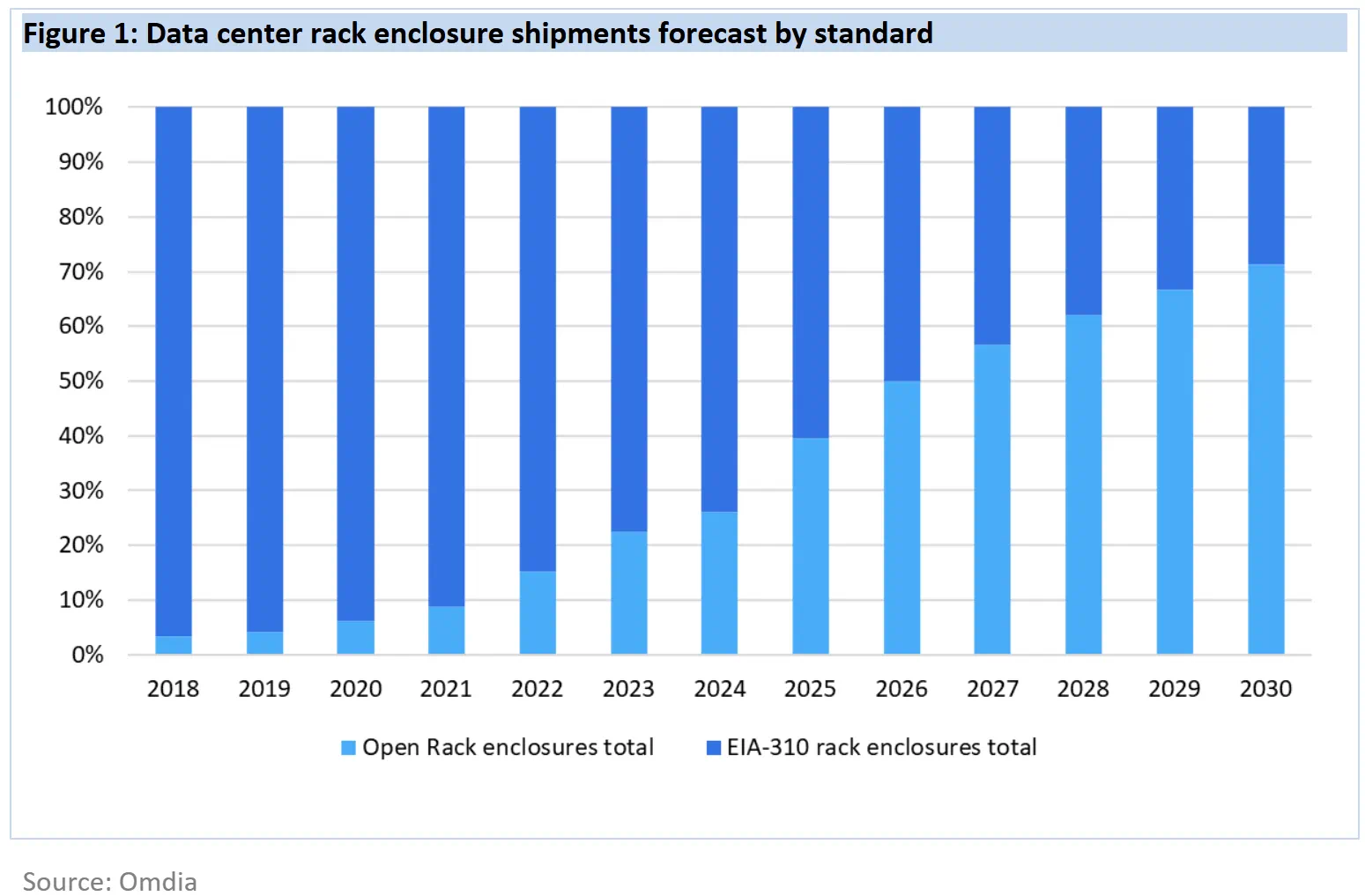When 51mm is all you need: Supersized 21-inch racks to become standard for enterprise and cloud service providers by end of the decade, displacing the venerable 19-inch format
Hyperscalers are turning to wider Open Rack designs for AI expansion

- Dell and HPE drive shift toward modular DC-MHS and 21-inch rack adoption
- AI systems benefit from wider racks enabling better airflow cooling and power capacity
- Cloud providers standardize on 21-inch Open Rack as demand for AI servers surges
New research has claimed data center operators are beginning to move away from traditional 19-inch EIA-310 racks in favor of wider 21-inch Open Rack designs.
A report from Omdia says the newer format could account for more than 70% of rack shipments by 2030 as AI and cloud operators continue to expand their infrastructure.
The change is being driven by server manufacturers and cloud service providers that have adopted Open Compute Project principles.
Hyperscalers leading the charge

Dell and HPE are among those supporting the modular Data Center Modular Hardware System, or DC-MHS, which is based on Open Rack architecture.
Omdia’s assessment of upcoming server designs shows that up to 90% of Dell’s future systems could move to this wider format.
The approach lets compute and storage modules operate at rack scale instead of as separate units.
The growing use of AI is, naturally, another key reason for the transition. Systems built for machine learning depend on dense cabling, liquid cooling and higher power delivery, all of which work more efficiently in a wider frame.
Sign up to the TechRadar Pro newsletter to get all the top news, opinion, features and guidance your business needs to succeed!
The 21-inch layout provides extra airflow and room for larger fans, improving cooling across heavier and hotter components.
This added space also makes it easier for engineers to install high-capacity power distribution and maintain internal cabling layouts without restricting airflow.
The design also leaves room for future improvements as processors evolve and server density continues to increase.
Hyperscalers such as Microsoft, Amazon, Google, Meta, Huawei and Oracle are already adopting the 21-inch format as their main standard.
Suppliers to these companies report steady investment and clear order pipelines for AI-related hardware.
Wiwynn, one of the largest manufacturers serving cloud providers, has reported strong AI server demand and is expanding its production capacity to meet longer-term orders.
Omdia expects rack shipments to grow faster than server shipments for the first time in ten years, with overall revenue rising to about $4.1 billion by 2030.
The combination of higher-capacity racks and modular server designs is expected to redefine how future data centers are planned and scaled globally.
Follow TechRadar on Google News and add us as a preferred source to get our expert news, reviews, and opinion in your feeds. Make sure to click the Follow button!
And of course you can also follow TechRadar on TikTok for news, reviews, unboxings in video form, and get regular updates from us on WhatsApp too.

Wayne Williams is a freelancer writing news for TechRadar Pro. He has been writing about computers, technology, and the web for 30 years. In that time he wrote for most of the UK’s PC magazines, and launched, edited and published a number of them too.
You must confirm your public display name before commenting
Please logout and then login again, you will then be prompted to enter your display name.